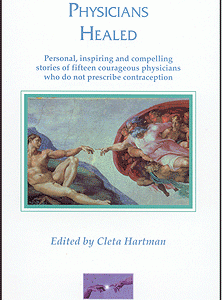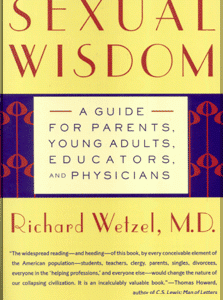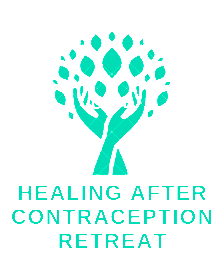According to the National Survey of Family Growth, between the years 2017-2019, there were 72.7 million women of reproductive age (15–49) using contraception in the United States. The same source reported that oral contraceptive pills were used by over 15 million women. Over 30 million women used other birth control methods, and almost 26 million of these were either sterilized or living with a sterilized man. Long-acting reversible contraception (including the intrauterine device and the Implant) was used by more than 11 million women. Other widely used methods of birth control included condoms (nearly 9 million women), contraceptive injections (2 million), and withdrawal (4 million).1
The Pill consists of one or more types of artificial hormones called estrogens and progestins. It works by inhibiting ovulation and sperm transport and by changing the lining of the inside of a woman’s uterus (called the endometrium) so that implantation of a newly conceived embryo is unlikely.
Ethical Concerns: When the Pill works by preventing implantation of a recently conceived embryo, it produces an early abortion.2
Medical side effects: In 2005, the World Health Organization officially classified oral contraceptives as Group I carcinogens (Group I being the most dangerous from Groups I-IV).3 A year later, a comprehensive meta-analysis published in the Mayo Clinic Proceedings, noted that 21 out of 23 studies found an increased risk of developing premenopausal breast cancer in women who had taken the Pill prior to the birth of their first child. Overall this group of women experienced a 44% increased risk in developing breast cancer prior to age 50.4 Other side effects that women have experienced include high blood pressure, blood clots, strokes, heart attacks, depression, weight gain, and migraines.5 Although the Pill decreases the risk of ovarian and uterine cancer, it increases the risk of breast, liver and cervical cancer.6 At least three studies have noted that the AIDS virus is transmitted more easily to women who are taking the Pill if their partner(s) have the AIDS virus.7,8,9
“The Shot”
Commonly known as “the Shot,” Depo-Provera, a long acting progestin hormone, is injected into a woman’s muscle every three months. It works by decreasing ovulation, by inhibiting sperm transport and by changing the lining of a woman’s uterus.10
Ethical concerns: By changing the lining of the uterus, Depo-Provera can cause an early abortion when conception does occur.
Medical side effects: The results of two major world studies have shown that women who take Depo-Provera for two years or more before age 25 have at least a 190% increased risk of developing breast cancer.11 In addition, Depo-Provera may reduce a woman’s bone density,12 and worsen her cholesterol level.13 One study found that women who had received injectable progestins (i.e., usually Depo-Provera or norethisterone enanthate) for at least five years suffered a 430% increased risk of developing cervical cancer.14 Several studies have shown that women who receive injectable progestins have a much higher rate of contracting the AIDS virus if their partner is infected, with one study showing a 240% increased risk.15
Other Hormonal Contraceptives
The same artificial hormones used in the Pill and Depo-Provera are packaged in a variety of other delivery systems: the Patch, the “Morning after Pill,” hormone impregnated IUDs and vaginal inserts, and others. More are in development. Most are so new that their side effects have not been well researched. They use similar hormones as in the Pill and can be expected to have generally the same cancer-producing risks.
Barrier Methods: The Condom and the Diaphragm
The condom and diaphragm are latex devices used to prevent sperm from reaching the ovum, thus preventing fertilization.
Medical side effects: The condom has a failure rate for avoiding pregnancy that is estimated to be between 10-30%.16, 17 There are several reasons: breakage or slippage during use, manufacturing defects, and defects caused by shipping and storage in a hot or very cold place. A comprehensive review of condom effectiveness in preventing sexually transmitted diseases, sponsored by the US National Institutes of Health, published in 2001, concluded that use of condoms reduces, but does not eliminate transmission of the AIDS virus to men and women and of gonorrhea to men. The review also concluded that condoms have no proven effectiveness in reducing the transmission of any other STD.18 At least one study has noted that women who use barrier methods such as the diaphragm or condom, or the withdrawal method, had a 137% increased risk of developing preeclampsia.19 Preeclampsia, a complication occurring in some pregnant women, is a syndrome of high blood pressure, fluid retention, and kidney damage, which may eventually lead to prolonged seizures and/or coma. It is theorized that exposure to the male’s semen plays a protective role against preeclampsia.
Spermicides
A spermicide is an agent that is designed to kill the man’s sperm and is often sold as a gel or as an ingredient in the vaginal sponge.
Medical side effects: Toxic Shock Syndrome has been associated with the spermicide sponge.20 One researcher has noted that couples who have used certain spermicides within a month of conception have experienced a doubling in the rate of birth defects, as well as a doubling of the rate of miscarriage.21
The IUD (Intrauterine Device)
This is a T-shaped device made of hard plastic. It may also contain copper or progestin hormones. A doctor inserts it into a woman’s uterus. It works by irritating the lining of the uterus and obstructing sperm transport.
Ethical concerns: When conception occurs with an IUD in place, the IUD can prevent implantation, thus causing an early abortion.22
Medical side effects: These include uterine perforation, which may lead to a hysterectomy, and infections, such as a pelvic or tubo-ovarian abscess. Use of all IUDs has been associated with an increased incidence of PID (Pelvic Inflammatory Disease).23 The use of IUDs have been associated with actinomycosis, an infection that can cause long term complications such as pelvic mass and infertility.24 The IUD may occasionally result in pregnancy and if this were to occur, an ectopic pregnancy would be more likely to occur. An ectopic pregnancy is one in which the unborn child implants himself/ herself in a location other than in the mother’s uterus, usually in the Fallopian tube. According to Rossing and Daling, two prominent researchers, women who had used an IUD for three or more years were more than twice as likely to have a tubal pregnancy as women who had never used an IUD, even years after the IUD had been removed.25 Ectopic pregnancy remains the leading cause of maternal death in the United States. The IUD may also cause back aches, cramping, dyspareunia (painful intercourse), dysmenorrhea (painful menstrual cycles), and infertility. 23
“Permanent” Sterilization: Tubal Ligation and Vasectomy
Surgical sterilization attempts to achieve permanent sterility by cutting, burning or tying a woman’s Fallopian tubes (called “tubal ligation”) or a man’s vas deferens (called “vasectomy”). Essure was a permanent non-surgical type of sterilization. Inserts placed in the Fallopian tubes caused a tissue barrier to form that prevented sperm from reaching the egg.
Medical side effects: Tubal ligation does not always prevent conception. When conception does occur, it is associated with a much higher incidence of ectopic pregnancy,26 which, is, as was noted, the leading cause of death in pregnant women. In addition, women who undergo the procedure may experience complications from the anesthesia or from surgery. Complications include bladder puncture, bleeding, and even cardiac arrest after inflation of the abdomen with carbon dioxide.27 Some women who have undergone a tubal ligation experience a syndrome of intermittent vaginal bleeding associated with severe cramping pain in the lower abdomen.28 Essure was discontinued in 2018 due to several adverse events including, perforation of the uterus, improper placement, pain, infection, and nickel allergy.29
About 50% of men who undergo a vasectomy will develop anti-sperm antibodies. In essence, their bodies will come to recognize their own sperm as “the enemy.” This could lead to a higher incidence of autoimmune disease. Several studies have noted that men who undergo a vasectomy have a higher incidence of developing prostate cancer, especially 15-20 years after their vasectomy.30 31,32,33,34 One recent study found an association between vasectomy and aggressive prostate cancer.35 Vasectomy has also been associated with a rare type of dementia.36
Wise Options
The best option before marriage is abstinence. The obvious benefits include greater self-respect, freedom from the risk of sexually transmitted disease, as well as monetary savings and no chance of an unintended pregnancy. Within marriage it should be noted that an openness towards having children yields specific medical benefits. Every additional child a woman bears reduces her risk of breast cancer and ovarian cancer by 5-10%. In addition, breast and ovarian cancer risks are reduced significantly in women who breast feed, with highest reductions in those women who breast-fed for the longest time intervals.37
NFP: Natural Family Planning
Natural Family Planning is a totally natural method by which couples can manage their fertility. In NFP a woman determines when she is either fertile or infertile by observing the consistency of her cervical mucus or other biomarkers such as her temperature. The largest trial to date (about 20,000 Indian women)—sponsored by the WHO (World Health Organization)—found an unintended pregnancy rate of less than 0.2%.38
One obvious benefit of NFP is that there is no increased risk of cancer or other diseases as opposed to hormonal contraceptives. Couples who use NFP have a divorce rate that is less than 5%39—far lower than the national rate of about 50%.
Buy it now:
What a Woman Should Know about Birth Control « One More Soul
REFERENCES:
1. Current Contraceptive Status Among Women Aged 15–49: United States, 2017–2019
Retrieved from: NCHS Data Brief, Number 288, October 2020 (cdc.gov)
2. Larimore WL, Stanford JB. Postfertilization effects of oral contraceptives and their relationship to informed consent. Arch Fam Med. 2000; 9: 126–133.
3. International Agency for Research on Cancer. Combined estrogen-progestogen contraceptives and combined estrogen-progestogen menopausal therapy. IARC Monographs on the Evaluation of Carcinogenic Risks to Humans. 2007; Vol 91. available at http://monographs.iarc.fr/ENG/Monographs/vol91/mono91-6E.pdf
4. Kahlenborn C, et al. Oral contraceptive use as a risk factor for premenopausal breast cancer: A meta-analysis. Mayo Clin Proc. 2006 Oct; 81(10): 1290-1302.
5. Kahlenborn C. Breast Cancer, Its Link to Abortion and the Birth Control Pill. Dayton, OH: One More Soul; 2000; 229-231.
6. For overall cancer risk from several cancers due to oral contraceptive use: Kahlenborn C. Breast Cancer, Its Link to Abortion and the Birth Control Pill. Dayton, OH: One More Soul; 2000: 228-229.
7. Allen S, et al. Human immunodeficiency virus infection in urban Rwanda. JAMA. 1991; 266: 1657-1663.
8. Simonsen JN, et al. HIV infection among lower socioeconomic strata prostitutes in Nairobi. AIDS. 1990; Feb: 139-144.
9. Mali JKG, et al. Contraceptive use and the risk of HIV infection in Nairobi, Kenya. Inter J Gynaecol Obstet. 1995; 48(1): 61-67.
10. The Society of Obstetricians and Gynaecologists of Canada. Injection (Depo-Provera). retrieved from http://www.sexualityandu.ca/professionals/contraception-1-3.aspx September 27, 2008.
11. Skegg DCG, et al. Depot medroxyprogesterone acetate and breast cancer: a pooled analysis of the World Health Organization and New Zealand studies. JAMA. 1995; 273(10): 799-804.
12. Wooltorton E. Medroxyprogesterone acetate (Depo-Provera) and bone mineral density loss. CMAJ. 2005; 172(6): 746.
13. Mia AR, et al. Effects of prolonged use of injectable hormonal contraceptive on serum lipid profile. Mymensingh Med J. 2005 Jan; 14(1): 19-21.
14. Herrero R, et al. Injectable contraceptives and risk of invasive cervical cancer: evidence of an association. Int J Cancer. 1990; 46(1): 5-7.
15. Crook AM, Ford D, Gafos M, Hayes R, Kamali A, Kapiga S, et al. Injectable and oral contraceptives and risk of HIV acquisition in women: an analysis of data from the MDP301 trial. Hum Reprod. 2014 Aug; 29(8): 1810-1817.
16. Collart D. Biochemistry & Molecular Biology. Condom failure for protection from sexual transmission of the HIV-a review of the medical literature. 1993, 5393 Whitney Ct., Stone Mountain, GA 30088.
17. Rahwan R. Chemical Contraceptives, Interceptives and Abortifacients. 1995. College of Pharmacy, Ohio State University.
18. National Institute of Allergy and Infectious Diseases. Scientific Evidence on Condom Effectiveness for Sexually Transmitted Disease (STD) Prevention [workshop June 2000], Summary report of the National Institute of Allergy and Infectious Diseases, NIH. DHHS. July 20, 2001.
19. Klonoff-Cohen HS, et al. An epidemiologic study of contraception and preeclampsia. JAMA. 1989 Dec; 262(22): 3143-3147.
20. Faich G, et al. Toxic shock syndrome and the vaginal contraceptive sponge. JAMA. 1986 Jan; 255: 216-218.
21. Jick H, et al. Vaginal spermicides and congenital disorders. JAMA. 1981 Apr; 245(13): 1329-1332.
22. Stanford J MD MSPH. Mechanism of action of intrauterine devices: Update and estimation of post-fertilization effects. Am J Obstet Gynecol. December 2002; 187(6).
23. Bayer HealthCare Pharmaceuticals Inc. Mirena. retrieved from http://www.drugs.com/pro/mirena.html September 27, 2008 and Bayer HealthCare Pharmaceuticals Inc. Paragard. retrieved from http://www.drugs.com/pro/paragard.html September 27, 2008
24. Pillai M, Van de Venne M, Shefras J. Serious morbidity with long-term IUD retention. J Fam Plann Reprod Health Care. 2009 Apr; 35(2): 131-2.
25. Daling J, et al. Past use of an intrauterine device and risk of tubal pregnancy. Epidemiology. 1994; 5:129-130.
26. Gaeta TJ, et al. Atypical ectopic pregnancy. Am J Emerg Med. 1993 May; 11(3): 233-234.
27. Dunn HP. Unexpected Sequelae of Sterilization. International Review of Natural Family Planning, 1:4 (Winter 1977) 318.
28. Townsend DE, et al. Post-ablation-tubal sterilization syndrome. Obstet Gynecol. 1993; 82: 422-424.
29. Essure Permanent Birth Control. Retrieved from: Essure Permanent Birth Control | FDA
30. Rosenberg L, et al. Vasectomy and the risk of prostate cancer. Am J Epidemiol. 1990; 132(6): 1051-1055.
31. Giovannucci E, et al. A prospective cohort study of vasectomy and prostate cancer in US men. JAMA. 1993 Feb; 269(7): 873-877.
32. Giovannucci E, et al. A retrospective cohort study of vasectomy and prostate cancer in US men. JAMA. 1993 Feb; 269: 878-882.
33. Hayes RB, et al. Vasectomy and prostate cancer in US Blacks and Whites. Am J Epidemiol. 1993; 137: 263-269.
34. Rosenberg L, et al. Vasectomy and the risk of prostate cancer. Am J Epidemiol. 1990; 132: 1051-1055.
35. Siddiqui MM, Wilson KM, Epstein MM, Rider JR, Martin NE, Stampfer MJ, et al. Vasectomy and Risk of Aggressive Prostate Cancer: A 24-Year Follow-Up Study. J Clin Oncol. 2014 Jul 7.
36. Weintraub S, Fahey C, Johnson N, Mesulam MM, Gitelman DR, Weitner BB, Rademaker A. Cogn Behav Neurol. Dec 2006; 19(4); 190-3.
37. Kahlenborn C. Breast Cancer, Its Link to Abortion and the Birth Control Pill. Dayton, OH: One More Soul; 2000: 12, 226.
38. Ryder RE. “Natural Family Planning”: Effective birth control supported by the Catholic Church. BMJ. 1993; 307: 723-726.
39. Kippley JF, Kippley SK. The Art of Natural Family Planning (Fourth Edition). The Couple to Couple League. 2007; 245.







Thanks Dr. Kahlenborn this is excellent! I will purchase a bunch and get them out on our university campus. Also, I think it’s no coincidence that your last name has “born” in it. God bless you in your awesome work to save and protect human life.